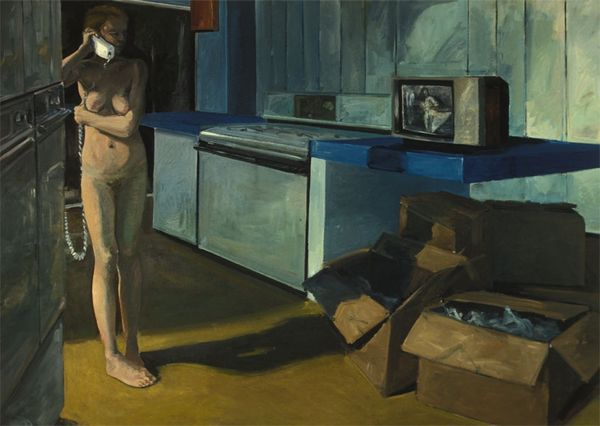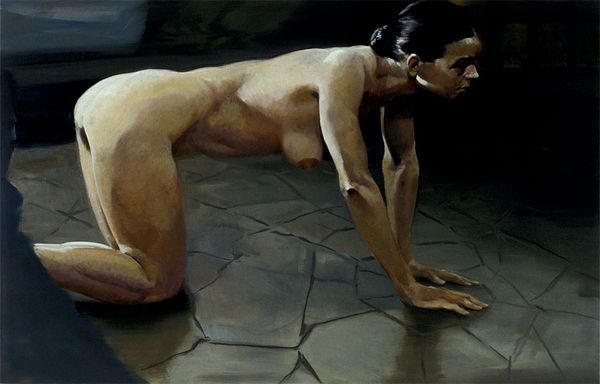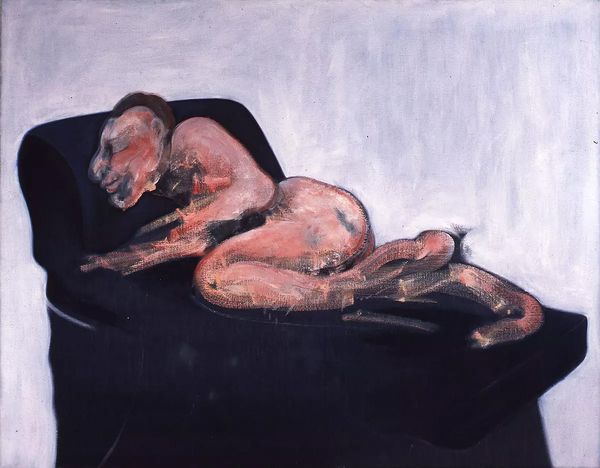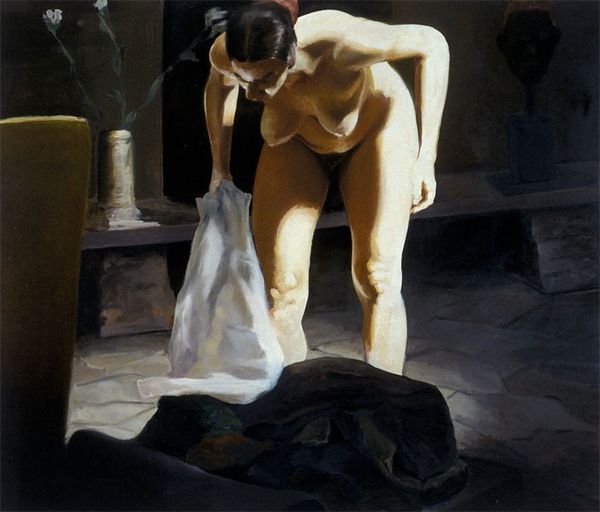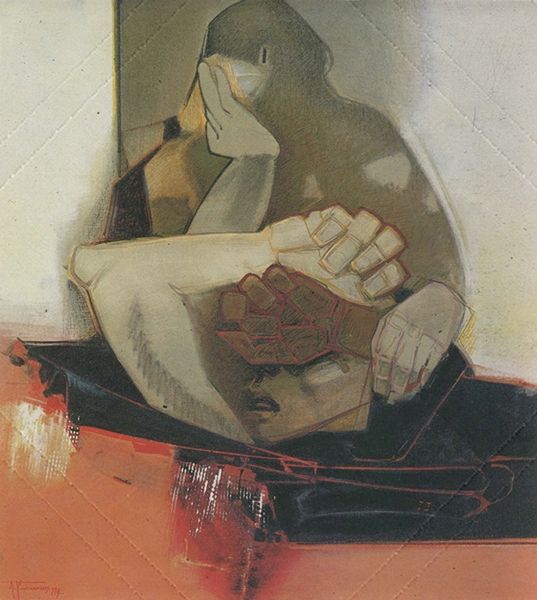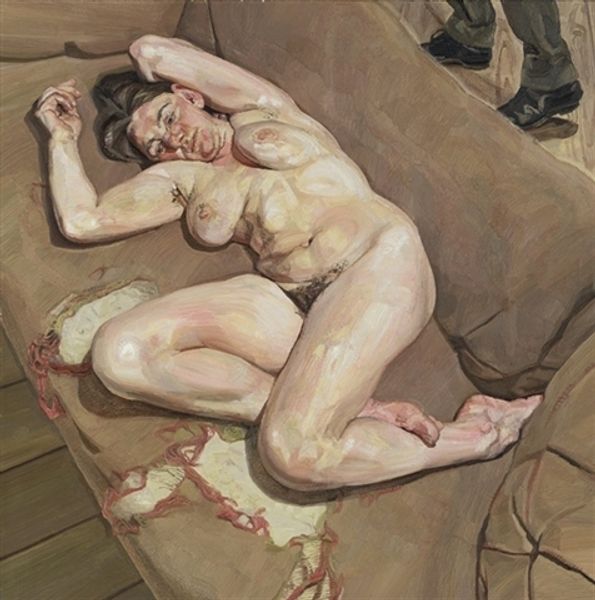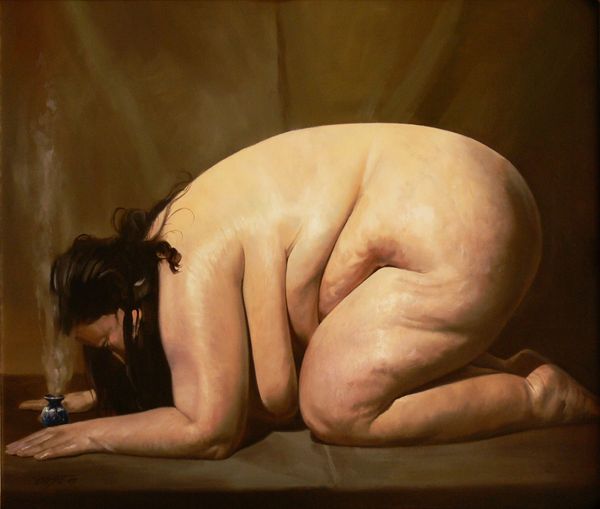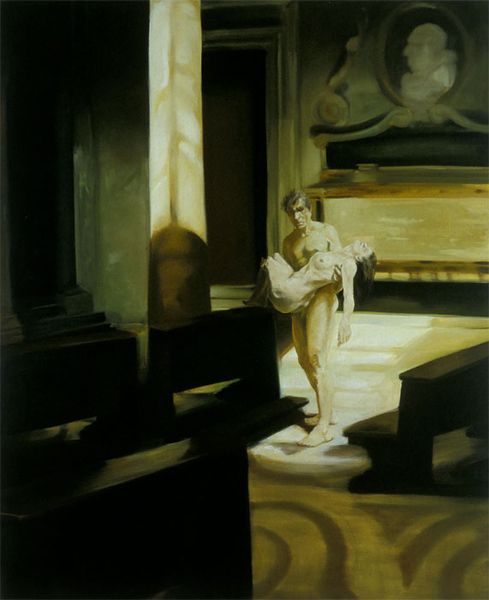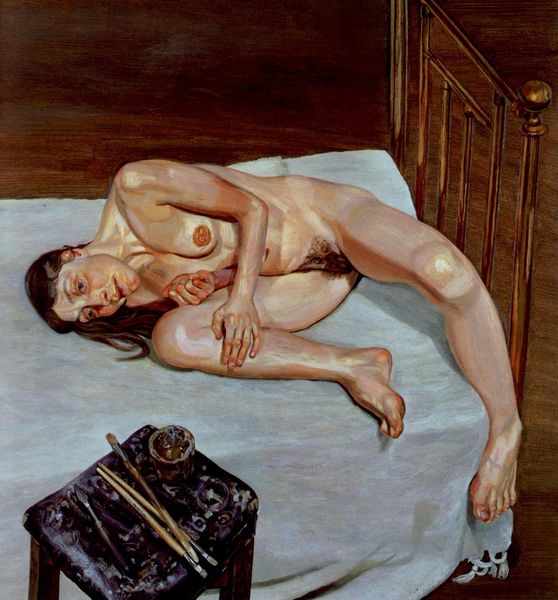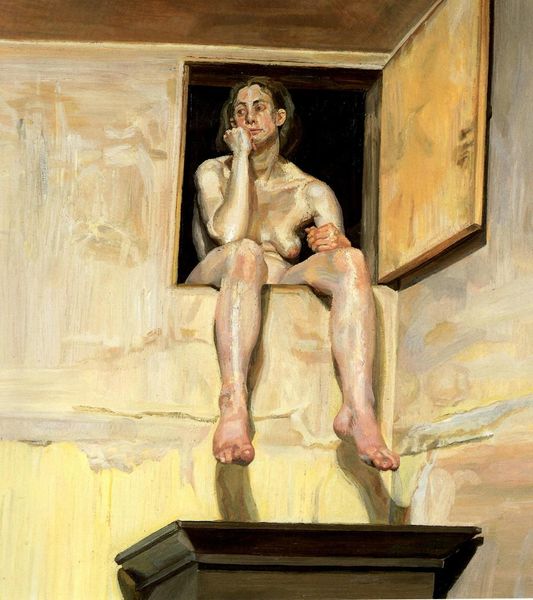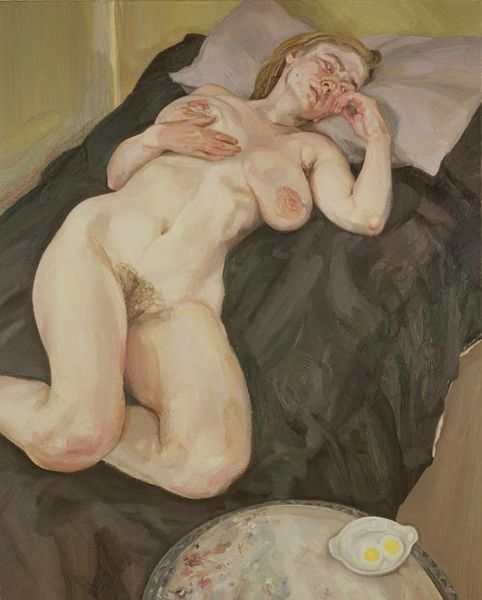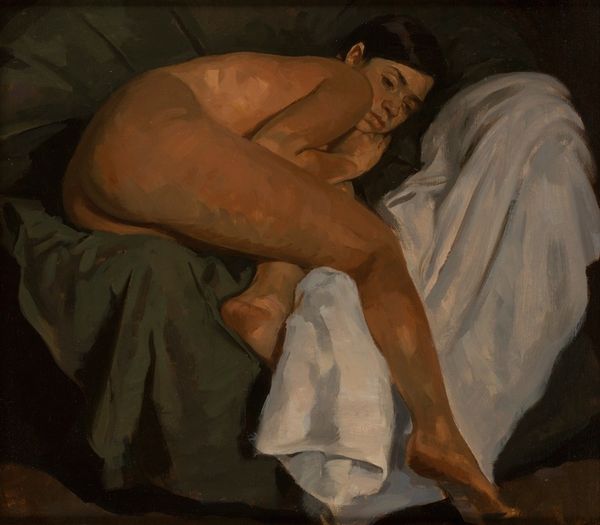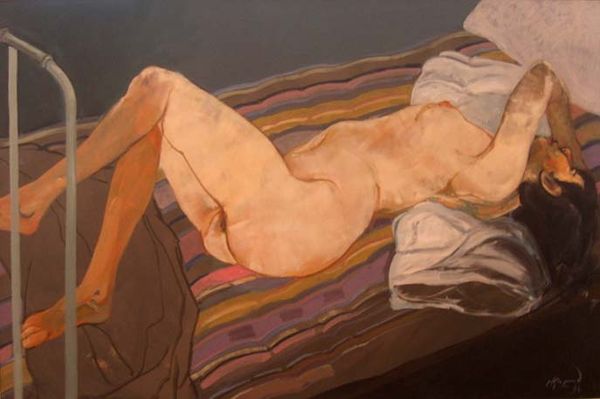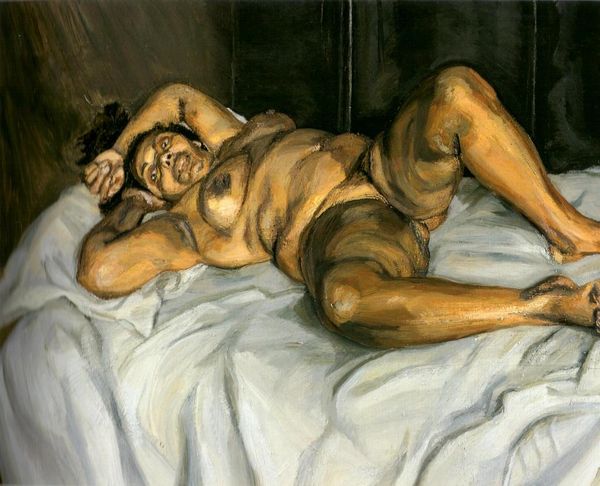
painting, oil-paint
#
portrait
#
contemporary
#
narrative-art
#
painting
#
oil-paint
#
figuration
#
oil painting
#
portrait reference
#
female-nude
#
neo-expressionism
#
nude
Copyright: Eric Fischl,Fair Use
Editor: This is Eric Fischl’s *The Travel of Romance, Scene I* from 1994, an oil painting featuring two nude figures in what appears to be an interior setting. The stark contrast between the figures, both in tone and implied narrative, feels really unsettling to me. What’s your read on this piece? Curator: Unsettling is a key word here. Fischl often explored the anxieties and hidden tensions within seemingly ordinary, middle-class American life. Considering his positionality, this piece seems to probe into the power dynamics of gaze and representation. How do you perceive the positioning of the figures in relation to each other and to us, the viewers? Editor: The lighter-skinned figure looks out, seemingly aware of us, almost confrontational. The darker figure is turned away, obscured. It does make you wonder about whose perspective is being prioritized, and what that says about representation. Curator: Exactly. And thinking about neo-expressionism and the focus on subjective experience during that time, this image can also be seen as a commentary on how personal narratives are invariably shaped by broader socio-political contexts. Who gets to tell their story, and how? Fischl's work often walked a fine line between critique and complicity. What responsibility do artists have when portraying potentially sensitive subjects? Editor: That’s a good question. It’s made me consider the ethics of representation more deeply. Curator: Ultimately, this painting serves as a potent reminder that even the most intimate scenes are often infused with the complexities of race, gender, and power. Editor: I see what you mean, it’s pushed me to reconsider the layers in play in seemingly simple compositions. Curator: And hopefully, that is useful, as an understanding is imperative when examining contemporary works.
Comments
No comments
Be the first to comment and join the conversation on the ultimate creative platform.
